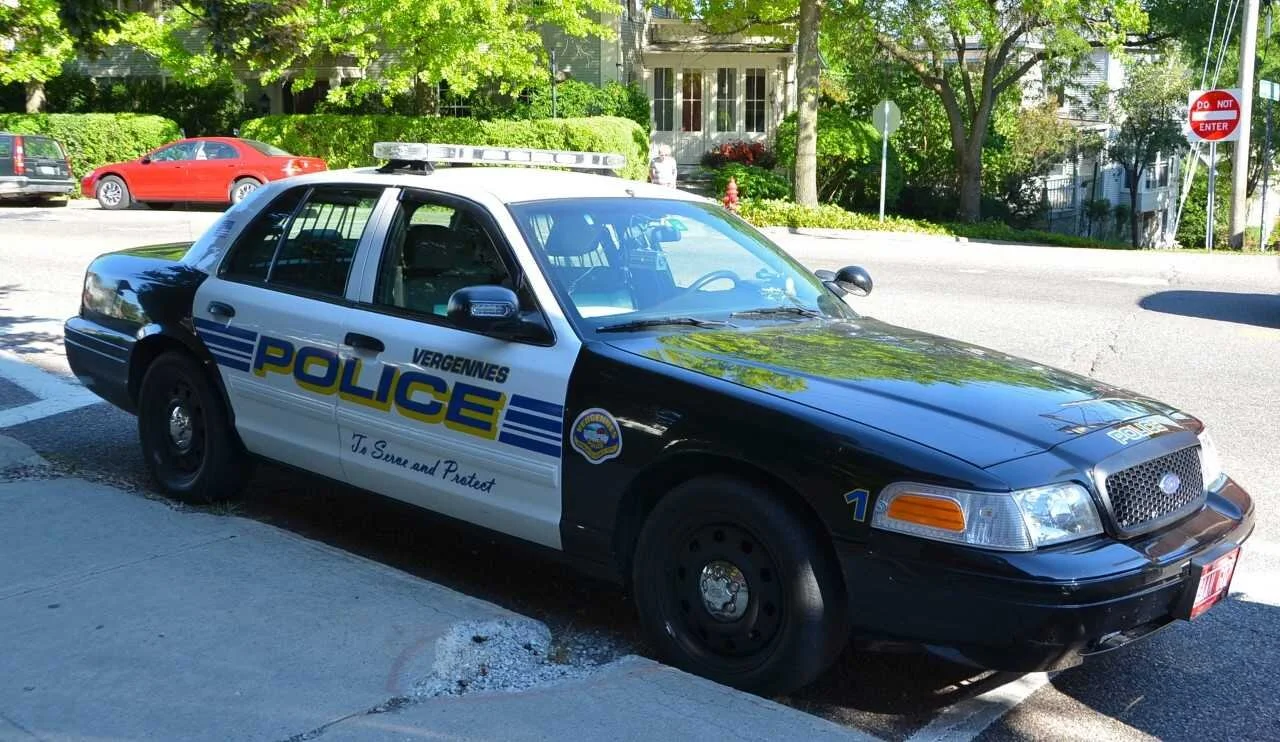Vermont police spending dropped slightly, report shows
Vermont police budgets in about half of all towns and cities dropped slightly during the most recent budget cycle, according to a new report from the University of Vermont’s Center for Research on Vermont.
The center released an analysis of 125 Vermont town police budgets and found that on average, budgets dropped by 0.38%. Renewed scrutiny has been trained on police nationwide as protestors called for reforms and defunding police forces after the killings of Breonna Taylor and George Floyd.
The report also shows how much money per capita police services spend in their respective towns per year. Numbers differ widely — from as little as $1 per person in Peru to over $400 per person in Stowe. The average spending of all town residents on police is $115, according to the 2021-2022 police spending report.
From the 2021 fiscal year to 2022, the average annual budgets for law enforcement decreased by 0.38%. Researchers noted that Stockbridge, which had a 1363.64% increase in funding, is not included because it would skew the average. They went from a budget of $550 to $8,050 in 2022.
Many Vermont towns are increasing police budgets, while some have significantly cut them, which created this average, according to the Center for Research on Vermont press release.
Statewide budget averages in the past increased by 4% from fiscal year 2019 to 2020, and increased by 6.4% from fiscal year 2020 to 2021, according to a VTDigger article and researcher Valentina Czochanski.
Researchers including Czochanski seek to answer questions such as how much Vermont towns are spending on police, which spends the most and least, and if budgets are increasing over time. Czochanski researched for the last two reports.
“The most challenging thing is finding the numbers for this data set,” said Czochanski.
She and other researchers searched town websites for annual reports and spoke to town clerks to find data for small and rural towns. Variations in data complicate findings too — the budgets may or may not include salaries and overtime benefits for police services and there’s no note of that. Despite this, the team added 28 towns to the report since February.
“I’m proud that we were able to get this data for 126 towns,” said Czochanski.
From fiscal year 2021 to 2022, around 60 towns increased budgets, 30 decreased budgets, and 35 town budgets stayed the same.
Thirteen towns increased their budgets by more than 10%, including St. Albans town. Their budget increased from $850,000 to $1 million dollars.
The report noted 10 towns that decreased their budgets by more than 20%. Marshfield’s budget dropped by 96.20%, and Pomfret by 54.55%.
The center published two reports in 2021 due to finding data for more towns, and to include budgets that are more accurate and approved by voters.
“We think that having a larger sample size for this does a better job of doing what the center wants to do, which is to take these larger conversations and look at them at the town level,” said Czochanski.
Researchers found no relationship between town size and increases or decreases in police budgets.
The Center for Research on Vermont centralizes every town’s data on their police spending, and for the smallest towns, information is difficult to find. Another caveat is that during COVID-19, towns may have been supported by the Vermont State Police.
The report doesn’t include why towns changed their police budgets.
Along with analyzing police spending, in spring 2021 the center began gathering data on changes in police incident reporting.
The University of Vermont Center for Research on Vermont is a community of scholars and community members collecting data on Vermont’s social, cultural, economic and physical landscapes. Emily Anderson and Richard Watts contributed as staff. Student researchers include Valentina Czochanski, Lucy Heisey, Emma Blahut, Caity Rector and Sam Popoli.







